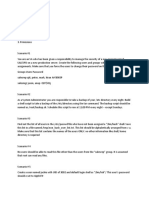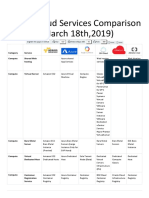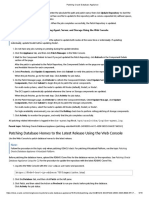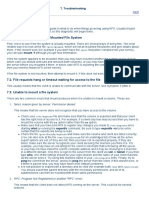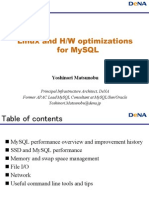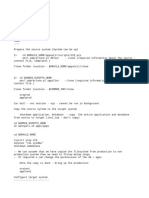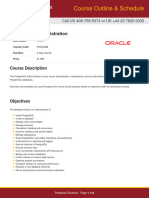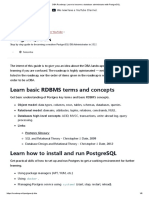0% found this document useful (0 votes)
126 views12 pagesPostgreSQL Administration (DBA) - ToC 22112024
The document outlines a training program for PostgreSQL Administration (DBA) aimed at equipping participants with skills in database management, performance tuning, and high availability (HA) environments. It includes prerequisites, a detailed curriculum covering various modules such as installation, configuration, security, and monitoring, as well as expected learning outcomes. Participants will gain a comprehensive understanding of PostgreSQL, including storage management, security, backup and restore concepts, and disaster recovery planning.
Uploaded by
babjeeponnamCopyright
© © All Rights Reserved
We take content rights seriously. If you suspect this is your content, claim it here.
Available Formats
Download as XLSX, PDF, TXT or read online on Scribd
0% found this document useful (0 votes)
126 views12 pagesPostgreSQL Administration (DBA) - ToC 22112024
The document outlines a training program for PostgreSQL Administration (DBA) aimed at equipping participants with skills in database management, performance tuning, and high availability (HA) environments. It includes prerequisites, a detailed curriculum covering various modules such as installation, configuration, security, and monitoring, as well as expected learning outcomes. Participants will gain a comprehensive understanding of PostgreSQL, including storage management, security, backup and restore concepts, and disaster recovery planning.
Uploaded by
babjeeponnamCopyright
© © All Rights Reserved
We take content rights seriously. If you suspect this is your content, claim it here.
Available Formats
Download as XLSX, PDF, TXT or read online on Scribd
/ 12








